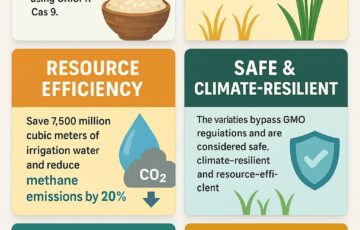Ozone layer healing, hole to be mended by 2066
News: According to a recent United Nations report, the Earth’s protective ozone layer is slowly but visibly repairing at a rate that would completely heal the hole over Antarctica in about 43 years from now.
UN Report on the Ozone layer
- More than 35 years after every country in the world agreed to stop producing chemicals that eat away at the layer of ozone in the Earth’s atmosphere that protects the planet from harmful radiation linked to skin cancer, cataracts, and crop damage, a once-every-four-years scientific assessment found recovery in progress.
- Improvements in the high stratosphere and the ozone hole have been noticed, according to Paul Newman, co-chair of the scientific evaluation.
- According to the study presented at the American Meteorological Society convention in Denver, the development is gradual. It won’t be until around 2040 that the average amount of ozone in the atmosphere at a height of 18 miles (30 kilometres) will return to its 1980 pre-thinning levels and the Arctic won’t return to normal until 2045.
- It won’t be completely mended in Antarctica, where the layer is so thin that a huge gaping hole forms every year, until 2066, according to the report.
- A 1987 accord known as the Montreal Protocol that forbade a class of chemicals frequently used in refrigerants and aerosols has been lauded by scientists and environmental activists as one of the greatest ecological successes for humanity.
- According to Newman, chief Earth scientist at NASA’s Goddard Space Flight Center, the two main compounds that eat away at ozone are present in the atmosphere at lesser concentrations. According to the paper, bromine levels have decreased by 14.5% since their 1999 peak while chlorine levels have decreased by 11.5% since their 1993 peaks. Bromine is more effective at devouring ozone than chlorine but is less prevalent in the air.





